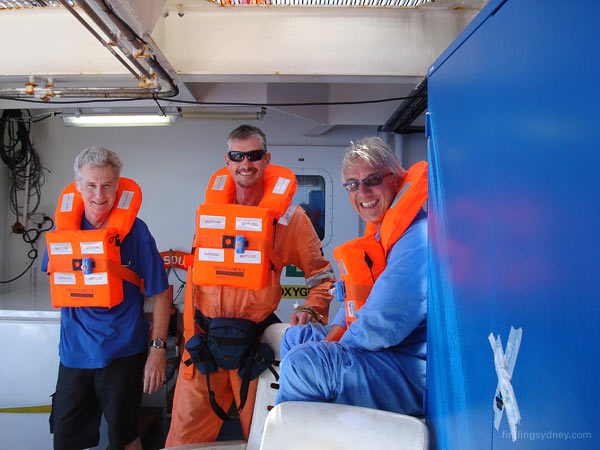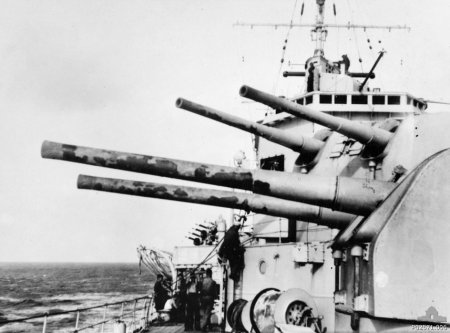David Mearns - Search Director, The Finding Sydney Foundation
A few days ago I wrote about the rhythm of a search expedition - how a good rhythm consists of a search line followed by a turn to the next line repeated many times over with monotonous regularity. We are finally starting to get into such a rhythm and this bodes well for the location of Sydney. Excluding the time lost to technical problems and Cyclone Ophelia we have only been searching for less than 4 days so we are still in the very early stages of a search that I expect could take 30 to 35 days, possibly more.
One of the most exciting aspects in any shipwreck search, but particularly this one, is that the wreck(s) in questions can be found at literally any time. We have three different image processing computers and monitors displaying the sonar imagery in real time, in addition to one very large screen that we mounted in the survey room especially for this expedition. So everyone can easily monitor the results of the search and there is no chance any important targets can be missed. But just to be safe, we also review the images on our two off-line systems at the end of each line to be absolutely sure.
For a number of reasons I favoured the eastern side of the search box, which is why we are concentrating our efforts there first. We will be spending the next week searching there before shifting to the less fancied western side of the box. Unfortunately, the weather gods are still being uncooperative and we are expecting a surge of 25 to 30 knot winds tomorrow. We can't afford to lose any more time because of bad weather but we will just have to see the cards we are dealt tomorrow.
Glenys McDonald - Director, The Finding Sydney Foundation (Observer)
Yesterday after our fire drill, I spent many hours looking at sonar screens. For a novice it was fascinating watching the geology, fault lines and depressions as they appeared more than 3000m below us. We had a few heart stopping moments as interesting geology was scrutinised and dismissed.
The fact that we are out here searching is of paramount importance. We are here because of the hard work of the HMAS Sydney relatives and researchers who have kept this story to the forefront of the nation’s conscience. We are also here because the Finding Sydney Foundation Directors never gave up.
I think it only fair to acknowledge the amount of work the five volunteer Directors of FSF have put in, particularly since the Commonwealth funding was signed off in October 07, especially our chairman Ted Graham.
I know when I joined FSF I had no idea of the workload, and I’m a bit of a workaholic. It was with great relief when we welcomed our Project Manager, Patrick Flynn on board in mid November. The complexities of the tender process and the awarding of numerous contracts all had to be finalised expeditiously to enable us to be in the water in the optimum search weather window of the first quarter of 2008.
We are funded by many individuals and relatives of the crew, but obviously we would not have made it to sea without the enormously generous support of the Commonwealth Government and the Western Australian and New South Wales State Governments.

Above Photograph - Electric Pictures Team, Mathew, Chris & Ulle at the fire drill.
John Perryman - Senior Navy Historian (Observer)
Yesterday was a good day, during which we received some tantalizing underwater side-scan sonar imagery of contacts which were later assessed as being geological features. We completed our south-north run in the early hours of this morning and with our tow-fish streamed astern of us on approximately 4500 metres of cable, we then commenced our long turn in order to position ourselves for the next run down line number 9. Each of the survey runs are recorded and scrutinised at least twice by both David Mearns and an analyst from the Williamson crew to ensure that no contacts of interest have been missed.
Historical Anecdote.
HMAS Sydney’s main armament consisted of eight 6-inch Breech Loading Mark XXIII guns, mounted in four twin barrelled Mark XXI turrets. Two of these turrets were mounted forward of Sydney’s bridge and main superstructure and were designated ‘A’ and ‘B’ turrets. The remaining two turrets were mounted aft of Sydney’s main mast and were designated ‘X’ and ‘Y’ turrets. These guns had a maximum range of 24,800 yards at a maximum elevation of 60 degrees. In layman’s terms they could fire a projectile weighing approximately 51 kilograms almost 22 kilometres which is roughly the distance from Central Station in Sydney to the city of Parramatta.

Above Photograph - Sydney's forward turrets following a shoot. Note the blistering paint on the gun barrels.
IMPORTANT NOTICE: The Material (including photographs) available in the "Press Room" section of this Website may be used/reproduced unaltered by your organisation (unless stated otherwise within the content description) subject to the terms and conditions set out in the Legal Section AND any Material (including photographs) which you use/reproduce must credit the source as "The Finding Sydney Foundation" and, as an option, you may also link the source statement with the website address http://www.findingsydney.com/.